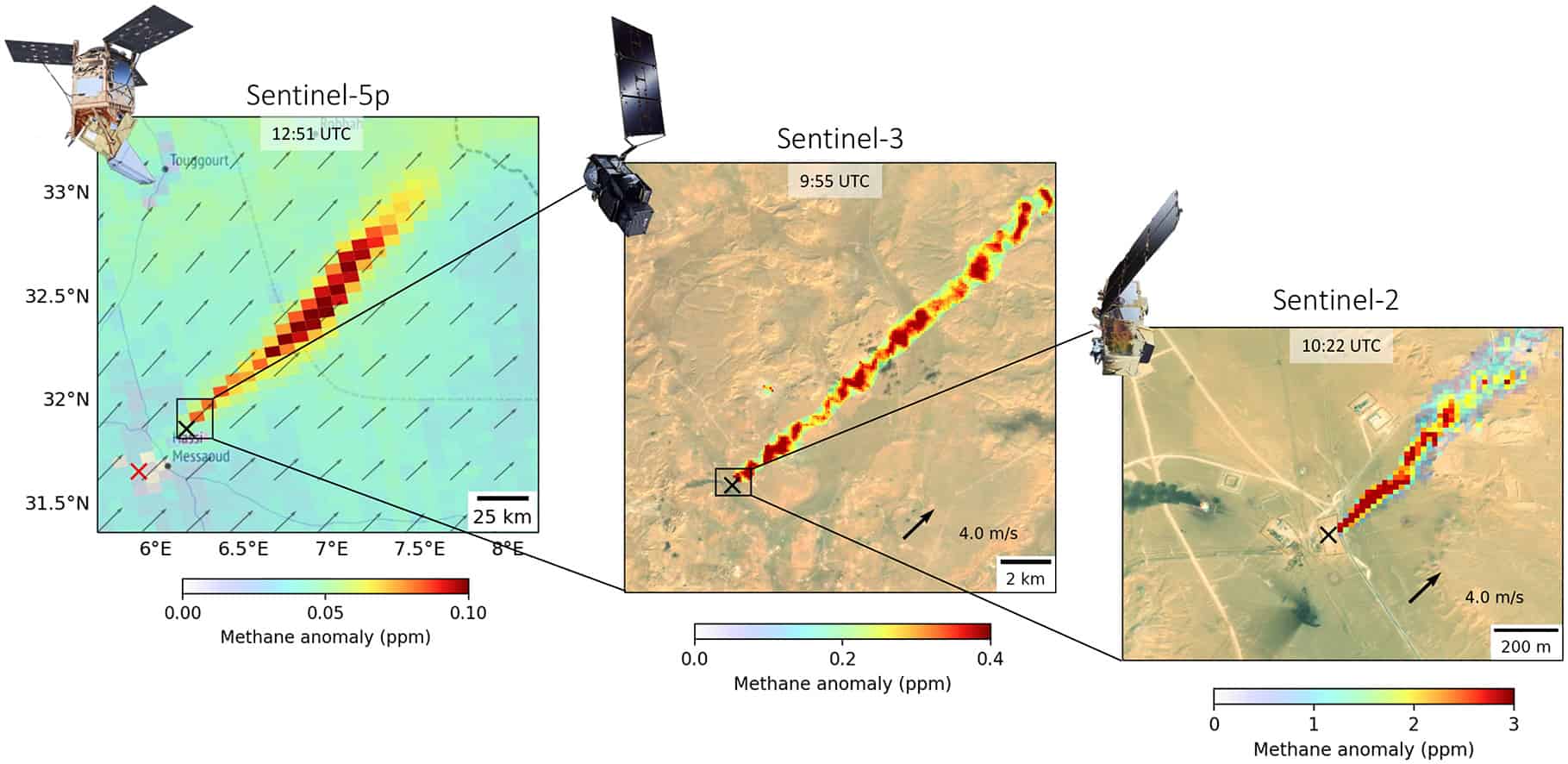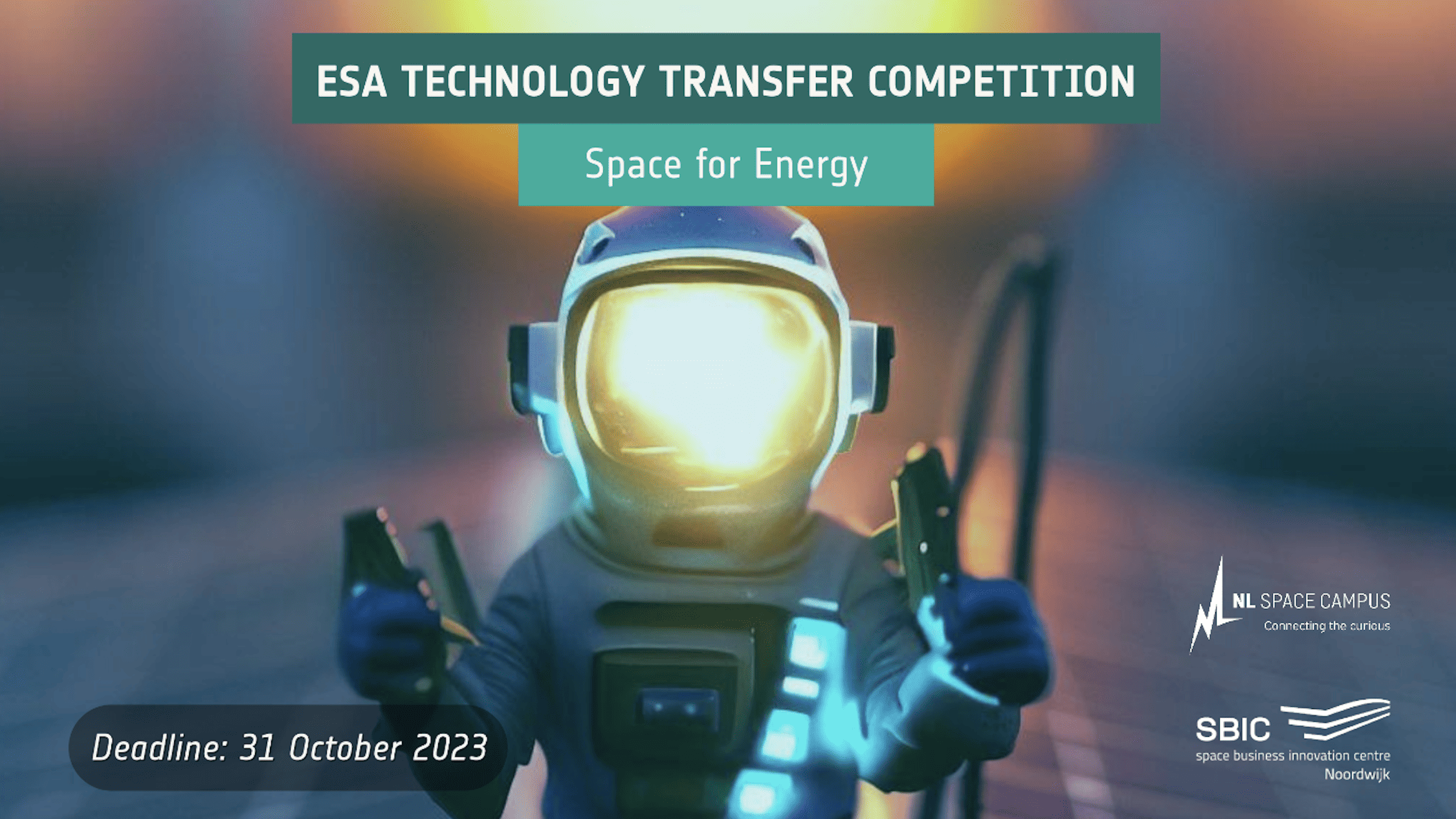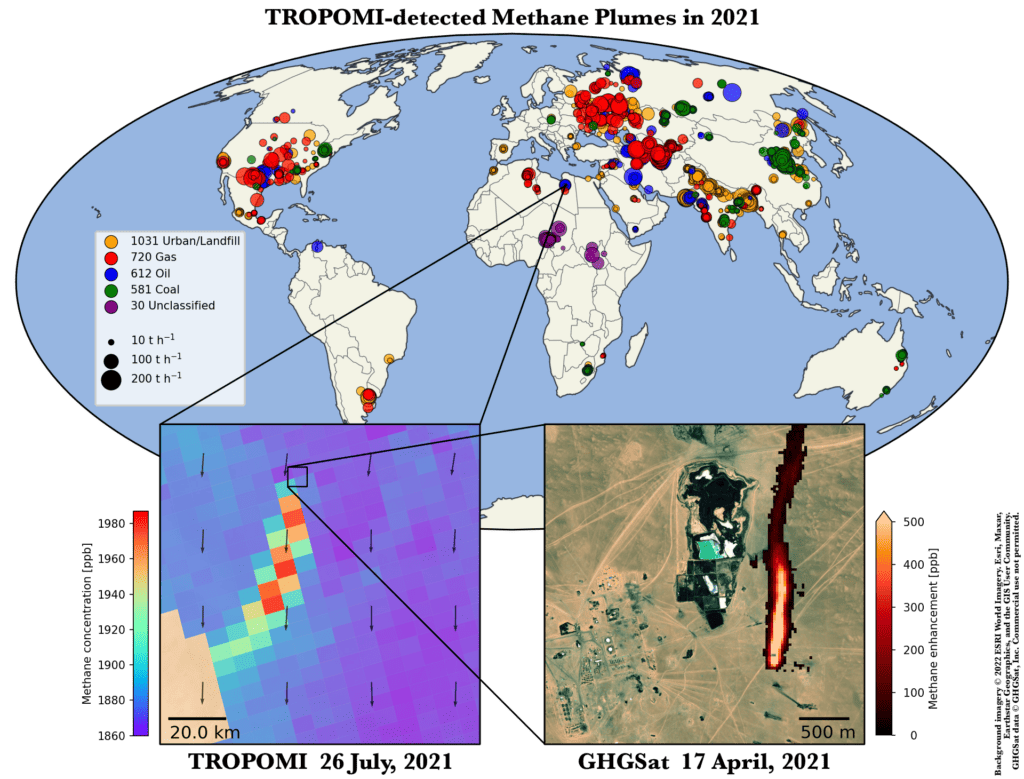
The Dutch space instrument TROPOMI provides an always up-to-date global map of methane concentrations. This is important because methane contributes a quarter to global warming. A number of individual sources leak large amounts of methane and thus constitute the “low-hanging fruit” – a relatively simple solution – in the fight against climate change. SRON researchers have now succeeded in using machine learning (AI) to detect those methane plumes earlier. Thus, The super emitters have a climate impact more significant than that of the whole of the Netherlands.
Methane is a particularly relevant greenhouse gas. This is because of methane’s strong ability to retain thermal radiation that would usually dissipate into space. By comparison, a ton of methane emitted has thirty times more heat than a ton of CO2, measured over a century. And that’s while methane disappears from the atmosphere much faster than CO2, after about ten years already.
The latter provides an opportunity to take climate action that has a relatively quick effect. Reductions in methane emissions yield reductions in global methane concentrations after ten years and, thus, a less amplified greenhouse effect. So-called super emitters are the low-hanging fruit in this, according to SRON. Indeed, some oil and gas plants, coal mines, and garbage dumps emit enormous amounts of methane. Relatively simple repairs can, therefore, yield significant climate gains. But then these superemitters must be found.
Every day
The Dutch TROPOMI instrument is the only space instrument that produces a global map of methane concentrations every day. Now, scientists at the Dutch space research institute SRON have automatically developed a method to detect methane plumes in these maps via machine learning. They then automatically calculate the extent of their emissions based on measured concentrations and current wind speeds.

“At first, we manually picked out the largest emitters, but it is still difficult to search in the millions of TROPOMI pixels,” says first author Berend Schuit (SRON). “A methane plume is often only a few pixels in size. Every day, we automatically get a list of detections from the machine learning model. We check those manually every week to be sure of our case. What remains, dozens of methane plumes, we publish online. We refer to other higher-resolution satellites for persistent leaks to find the exact emitter. This information is used by the United Nations International Methane Emissions Observatory to work with responsible companies or governments to find a solution.”
Golden opportunity
“The dozens of methane plumes that TROPOMI picks up every week offer a golden opportunity in the fight against climate change,” says co-author Bram Maasakkers (SRON). “If you can see it from space, it’s serious. We are now getting a good global picture of these super emitters for the first time. In our publication, we describe the 2974 plumes we found in 2021; 45% of them come from the oil and gas industry, but we also see plumes from urban areas (35%) and coal mines (20%). We detect man-made emissions with a significantly greater climate impact than all of the Netherlands. And in many cases, those leaks are easy to plug.”








